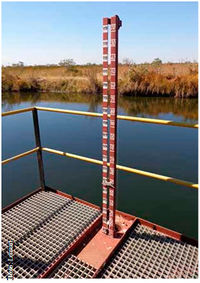Knowledge fuels change
For over a decade, Energypedia has shared free, reliable energy expertise with the world.
We’re now facing a serious funding gap.
Help keep this platform alive — your donation, big or small, truly matters!
Thank you for your support
SPIS Toolbox - Determine Water Requirements and Availability

Introduction
Do want to know all about SPIS – Solar Powered Irrigation System : Please go to the newly launched standalone Solar Powered Irrigation Systems (SPIS) website (www.spis-toolbox.org) , featuring three SPIS toolbox:
- Toolbox for beginners,
- Toolbox for farmers (new SPIS Web based App – to calculate design of the pumps),
- the Toolbox for experts - the updated version - Version 6
and additional resources (Publication about SPIS).
The Toolbox on Solar Powered Irrigation Systems (SPIS) is designed to enable advisors, service providers and practitioners in the field of solar irrigation to provide broad hands-on guidance to end-users, policy-makers and financiers. Risks related to system efficiency, financial viability and the unsustainable use of water resources can thus be minimized. The Toolbox comprises informative modules supplemented with user-friendly software tools (calculations sheets, checklists, guidelines). read more
Modules and tools touch upon:
- assessing the water requirements,
- comparing the financial viability,
- determining farm profitability and payback of investment in SPIS,
- sustainably design and maintain a SPIS,
- highlight critical workmanship quality aspects,
- and many more.

Determine water requirements and availability
Water requirements: The amount of water needed by a plant depends on the climate, the crop as well as management and environmental conditions. It is expressed as Crop Water Requirement (CWR) (see GET INFORMED – Irrigation Principles).
Calculating crop water requirements is a complex task but with the help of useful software tools, such as CROPWAT, experienced agricultural extension workers are able to give advice to individual producers. CROPWAT is available with FAO after registration and is free of charge (see link at the end of this module).Agricultural offices and extension services are usually in a position to provide CWR data for the most common crops in an area, based on the prevailing local climate conditions.
The sum of the individual Crop Water Requirements (CWR) for each plant in the field determines the Net Irrigation Water Requirements (NIWR) for a given period of time.The NIWR determines how much water a crop requires to satisfy its demand for water in the soil. However, water is never 100% efficiently applied as there may be leaks or other losses in the system. Efficiency is largely dependent on the irrigation method (e.g. furrow, basin, drip or sprinkler irrigation). The Gross Irrigation Water Requirement (GIWR) is used to express the quantity of water that is required in the irrigation system. It is important to subtract the water that is fed to the root zone of the plants through precipitation. The DESIGN 05-Pressure Loss Tool helps design the irrigation system soas to ensure that as little pressure as possible is lost in the system. In addition, it serves as a checklist to identify pressure losses, e.g. due to leaks in an existing system.
Water availability: In terms of planning and designing any irrigation system, the initial consideration should always be the requirement and the availability of water (access to water, water rights and concession, well or borehole yield). Subsequently, a system can be designed based on the water availability and the most suitable and possible cropping pattern. Water abstraction and irrigation system components need to be adapted to each other in order to achieve the best result in terms of technical, financial and environmental viability.
Outcome/Product
- Water availability;
- Total irrigation water demand;
- Alternative irrigation schedules;
- Hydraulic characteristic of irrigation system;
- DESIGN 05-Pressure Loss Tool to check on pressure losses in the system.
Data Requirements
- Local evapotranspiration (ETo data);
- Rainfall, wind and insolation data;
- Crop details (e.g. ETc values);
- Soil characteristics;
- Type of irrigation system and efficiency;
- Water license/rights, well and aquifer capacities on site.
People/Stakeholders
- Producers;
- Agricultural service providers;
- Meteorological service providers;
- Water authorities;
- Water user associations.
Important Issues
- CROPWAT includes standard crop and soil data but would require local data input to do accurate prediction at farm level;
- Overexploitation or persistent groundwater depletion may occur if groundwater abstraction continuously exceeds the natural groundwater recharge (severe negative environmental impact), see SAFEGUARD WATER module;
- A proper pump design takes the site-specific well capacity into account;
- Efficient water abstraction monitoring needs to be planned;
- Demand for irrigation water will vary throughout the year, with peak demands often more than twice the average demand.




















